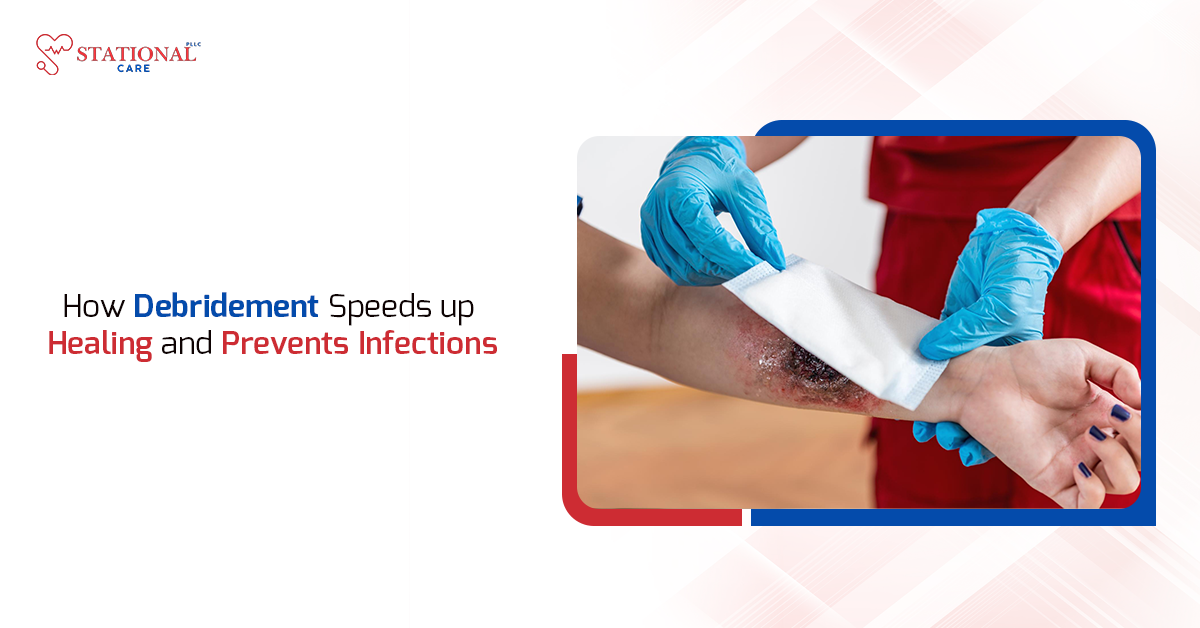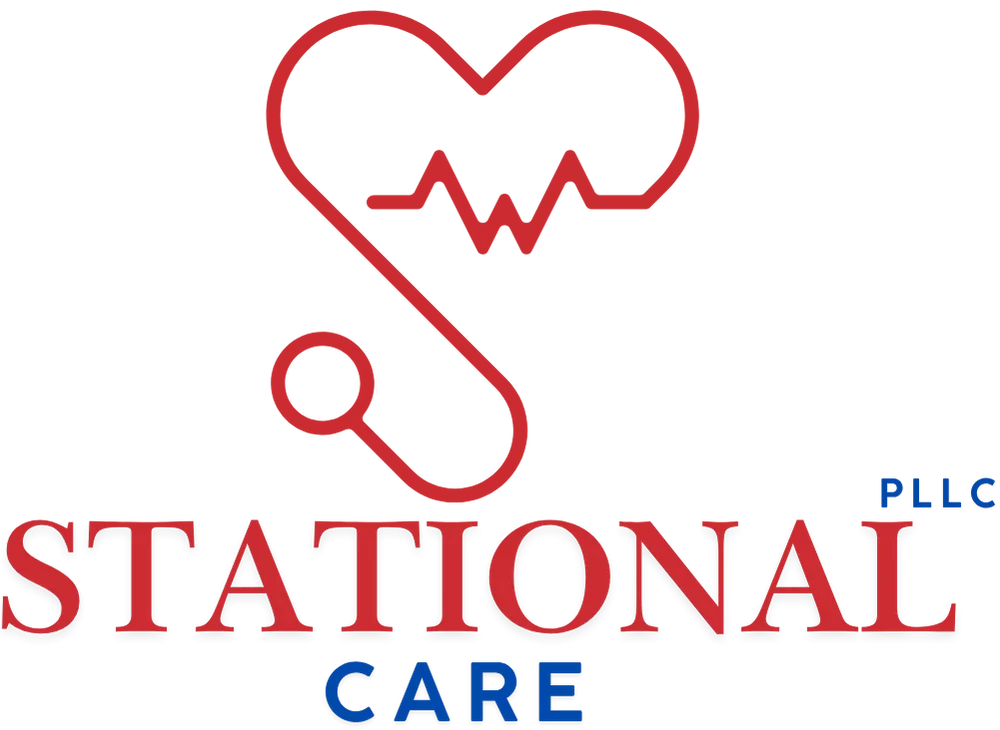Wounds can happen to anyone, including children, adults, and older people. If you have a wound, you should ensure that it is clean.There are cases when wounds need too much time to heal. This is usually due to dead skin, pus, or dirt in the area of the wound. Debridement removes these obstacles.
At Stational Care, we use debridement to promote faster healing and prevent infection.
Let’s understand what debridement is, why it matters, and how it helps speed up healing and prevent infections.
What Is Debridement?
Debridement is a health-related procedure through which the dead, worn out or contaminated tissue is thoroughly removed from an injury.
Debridement cleans up a site with unhealthy tissue to allow healthy skin to grow and close the wounds correctly.
Why Is Debridement Important?
Slow-healing wounds can get infected, leading to serious health issues or hospitalization.
At Stational Care, our priority is the prevention of infection and the acceleration of recovery, in particular for those patients whose chronic conditions, such as diabetes or circulatory disorders, lead to increased risks.
Debridement does two main things:
- Faster healing
- Prevent infections
Taking out dead or infected tissue lets your body work on growing new, healthy cells. This way, it can stop wasting energy on the bad ones.
Types of Debridement
Physicians choose the mode of debridement, depending on the size of the wound, its depth, and the health condition of the patient. So, these are the principal ones:
- Mechanical Debridement
This type of treatment removes the dead tissue each time one changes the dressing using instruments such as gauze or wet-dry dressings.
- Surgical Debridement
Perfect for use in deep or infected wounds. The healthcare provider removes tissue with the help of sterile surgical equipment.
- Enzymatic Debridement
Even the enzymes containing special creams used by healthcare providers are able to dissolve dead cells in a non-invasive manner, which is particularly useful for patients who are unable to undergo surgery.
- Autolytic Debridement
Such an approach relies on natural body fluids that heal, and there are moisture-keeping dressings to help with the natural breakdown of tissues.
- Biological Debridement (Maggot Therapy)
This procedure is used to remove dead skin with sterile maggots, but it is rare. It is not only safe but also very effective in certain complicated situations.
So, every wound is unique, and so is the treatment. At Stational Care, our skilled team chooses the method that best fits your condition, comfort, and overall health.
How Debridement Speeds Up Healing and Prevents Infections
When the dead skin remains in the wound, it does not allow blood to enter the area. Blood carries oxygen and nutrients, which are used by the body to heal.
Removal of the barrier is essential, and this is done through debridement in the name of which the blood is allowed to move, and the repair process begins immediately.
It also minimizes swelling, and it prevents dangerous germs. A cleaner wound will be able to form healthy skin considerably quicker than a dirty wound.
Infections can be serious. They may cause:
- Fever
- Pain
- More tissue damage
Debridement takes away infected tissue and bacteria. A clean wound has a better chance of healing without problems.
At Stational Care, our wound care specialists are trained to spot early signs of infection and treat them before they become serious.
When Is Debridement Needed?
You might need debridement if:
- Your wound hasn’t healed in over 2 weeks
- There’s yellow, brown, or black tissue
- The wound smells bad or leaks pus
- The skin around it is red, swollen, or warm
You may be recovering after an operation, struggling with diabetic foot, or handling pressure ulcers, and the Stational Care team will be able to choose how to proceed.
What Happens After Debridement?
After the dead cells are taken out, the injury is treated and covered. You may need:
- Special dressings
- Antibiotics if there’s an infection
- Pain medicine if it hurts
- Follow-up visits to check healing
At Stational Care, we don’t just treat wounds, we support your overall health by checking your nutrition, blood flow, and managing conditions like diabetes to ensure proper healing.
Who Benefits Most from Debridement?
At Stational Care, we see many patients who benefit from this treatment, especially:
- Adults with diabetes
- Seniors with chronic wounds
- Patients recovering from surgery
- People with poor blood flow in their legs or feet
- Individuals with bedsores or venous ulcers
These circumstances can complicate recovery, but our primary health and wound care specialists are highly skilled in assisting these individuals, which helps ensure their recovery is secure.
Wound Care at Home After Debridement
Your role in healing matters. After debridement, Stational Care team guides you through:
- Keeping the wound clean and dry
- Changing dressings as instructed
- Watching for signs of infection
- Eating healthy foods for faster healing
With our house call service, wound care continues at home, with the same high standards you’d receive in a clinic.
Final Thoughts
When it comes to wounds, healing quickly and safely matters. Debridement accelerates speedy healing and the elimination of infections by removing the bad stuff and allowing the good stuff, the healthy skin, to develop.
If you or someone you care about has a wound that won’t heal, talk to a provider about debridement at Stational Care. Your health is important to us.
We’re here to provide expert care right at your door. Call us now to schedule a wound care visit.
FAQs
Q: Does debridement leave scars?
Not usually. It may reduce scarring by helping wounds close neatly.
Q: Can I clean a wound at home instead?
Basic cleaning is fine for small cuts, but infected or deep wounds need professional care.
Q: Is natural healing better than debridement?
Natural healing works for small wounds, but big or infected ones need help. Debridement supports your body, not replaces it.


